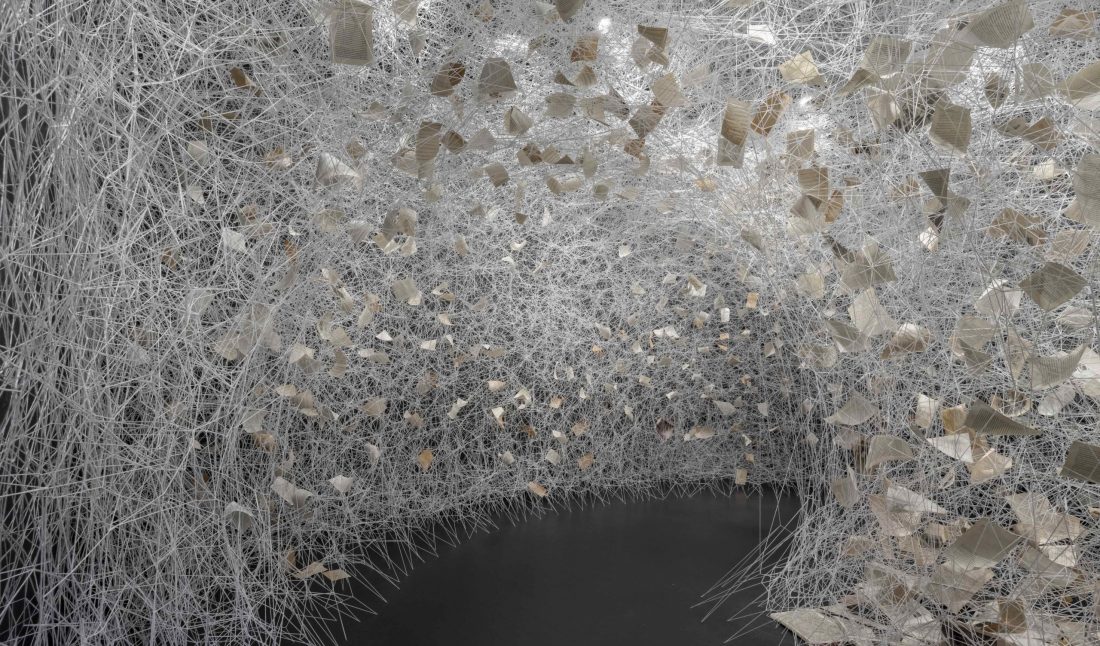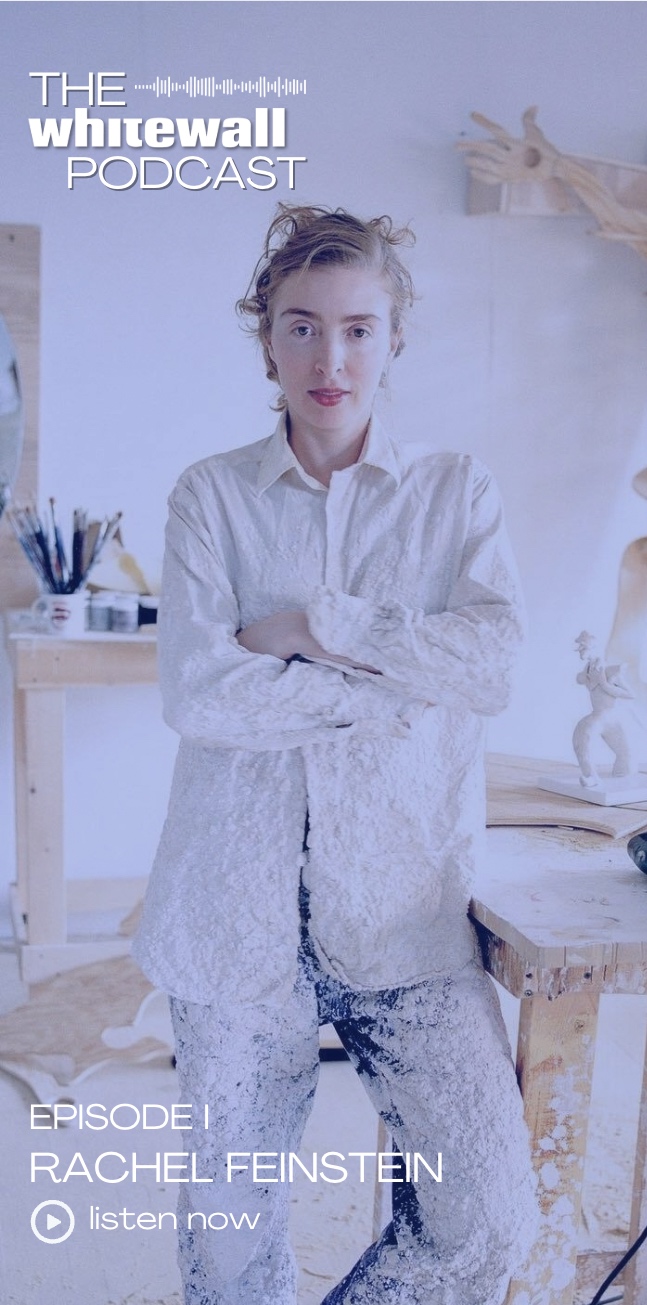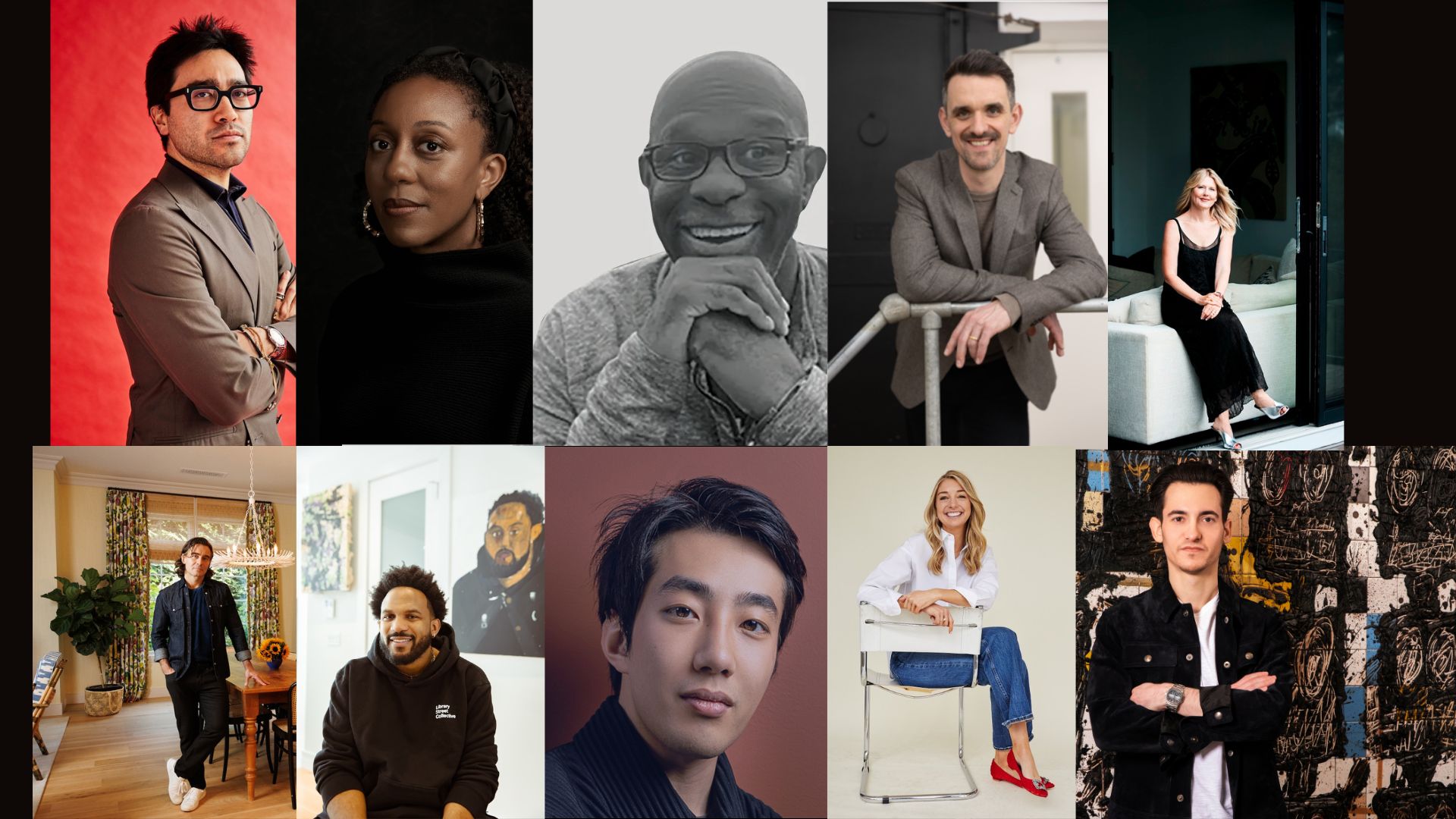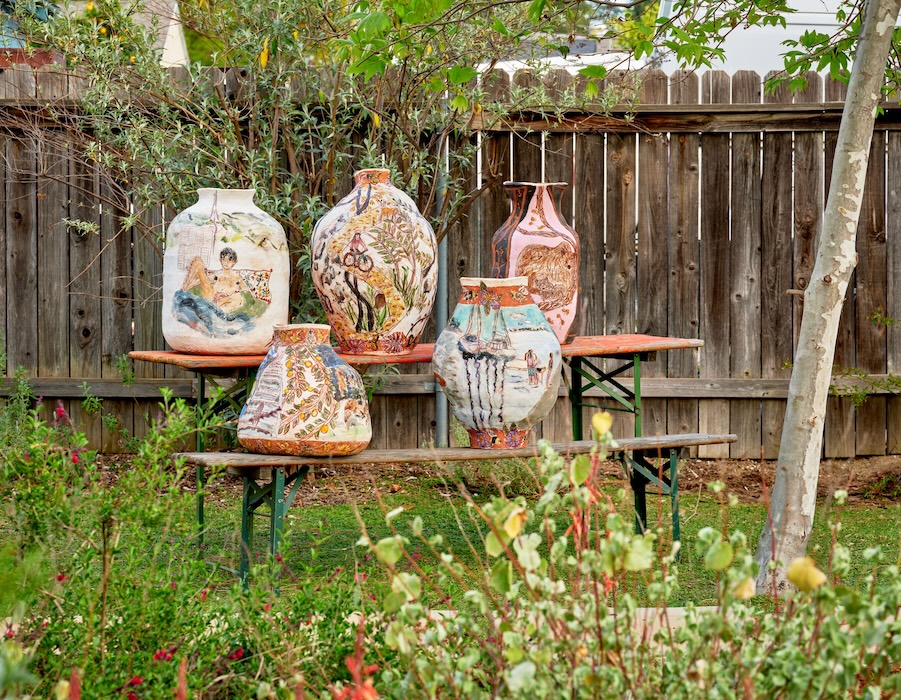Chiharu Shiota’s artistic practice makes visible the invisible threads of connectivity between us and all the traces we leave of our existence—be it memories, moments, or relationships. While the artist works beautifully across mediums like sculpture and drawing, Shiota is most well-known for her installations. Usually beginning with yarn or string, she takes to filling her venue of choice with brightly-colored threads that create living tapestries of these otherwise-intangible stories, sometimes accompanied by found items or objects that complete the narrative.
Through March 9, such an installation can be found at Galerie Templon in New York—Shiota’s first solo show in the city in more than a decade. Entitled “Signs of Life,” the exhibition is the result of two weeks of installing the site-specific works The Web above our lives and Human Rhizome. Also on view are pages of a diary suspended in a tunnel of white thread, drawings in shades of red, a string composition encompassing a gown on a mannequin, and a metallic sculptural work that evokes the same feeling as her thread compositions.
Intrigued by Shiota’s practice and the works on view Whitewall spoke with the artist to learn more.
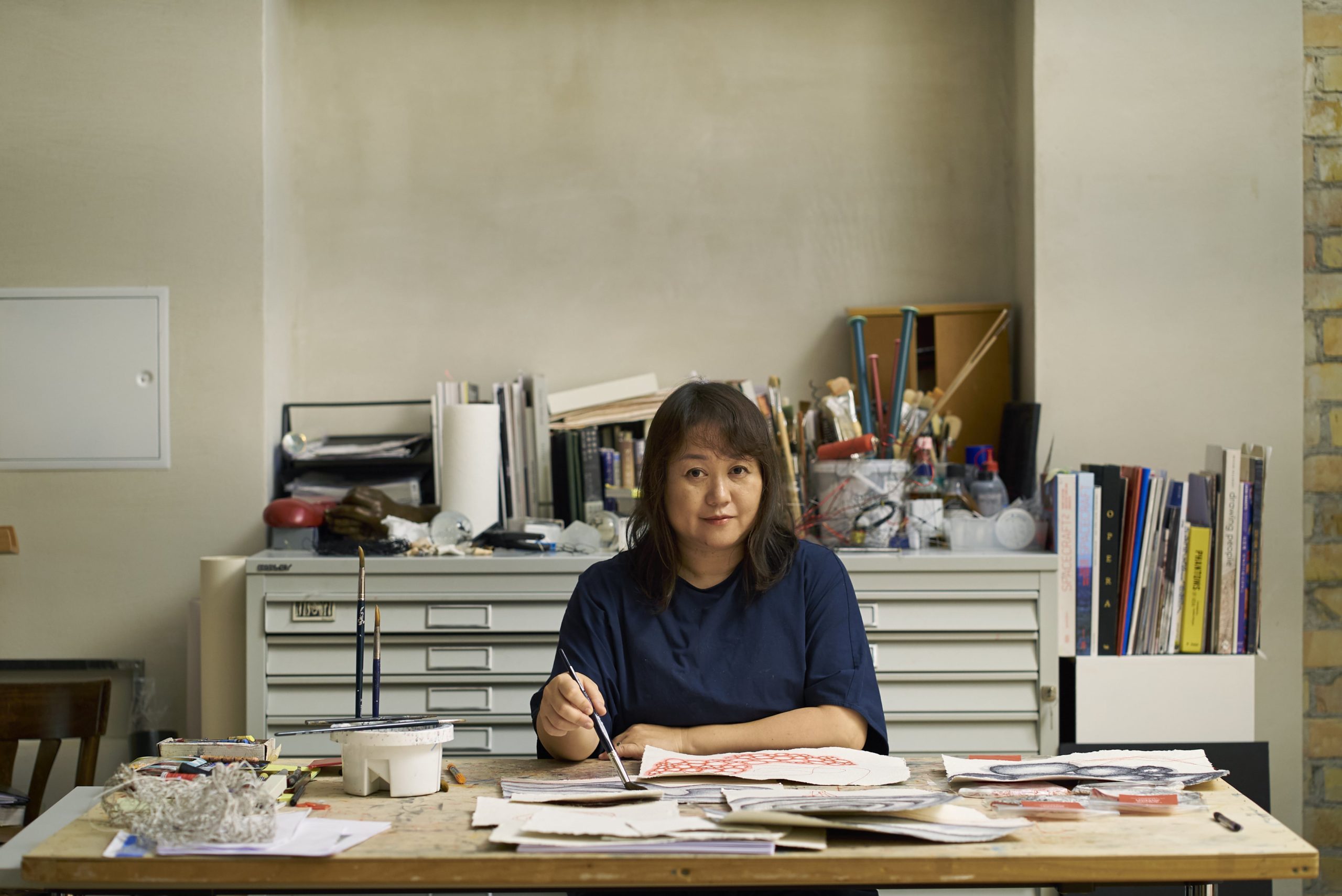 Portrait of Chiharu Shiota by Sunhi Mang.
Portrait of Chiharu Shiota by Sunhi Mang.
WHITEWALL: Your exhibition “Signs of Life” follows your practice of installing environments based around configurations of yarn or thread, looking at the interconnectedness of our lives today. What was your starting point for the concept seen on view?
CHIHARU SHIOTA: For this exhibition, I use a diary and pictures I found at a flea market. This person wrote in their diary after the war. Even though I never met this person, I feel their existence, they kept all their life in this diary. After they died, nobody was interested any more, it was lost, and I found it again. I was very interested and picked it up. I want to connect this memory to the universe.
WW: Tell us about the two installations on view.
CS: There are two big spaces at the gallery, and I wanted to show different installations. For The Web above our Lives, the web above our lives and connection fills the room and I hold it in my hand on the ground. The other installation Human Rhizome is about the significance of life for me.
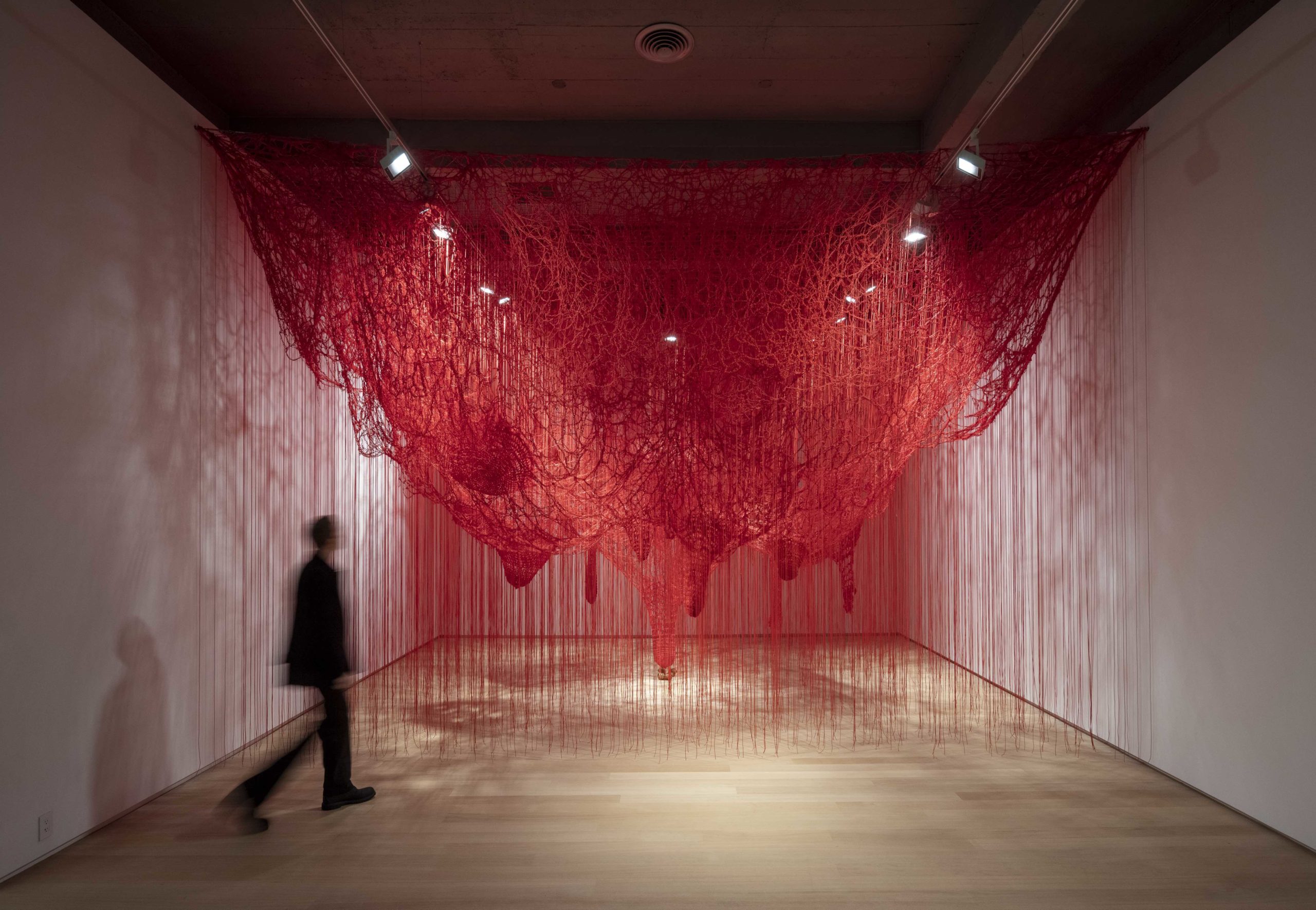 Installation view Chiharu Shiota: “Signs of Life” at Templon, NY, photo by Charles Roussel, courtesy of the artist and Templon.
Installation view Chiharu Shiota: “Signs of Life” at Templon, NY, photo by Charles Roussel, courtesy of the artist and Templon.
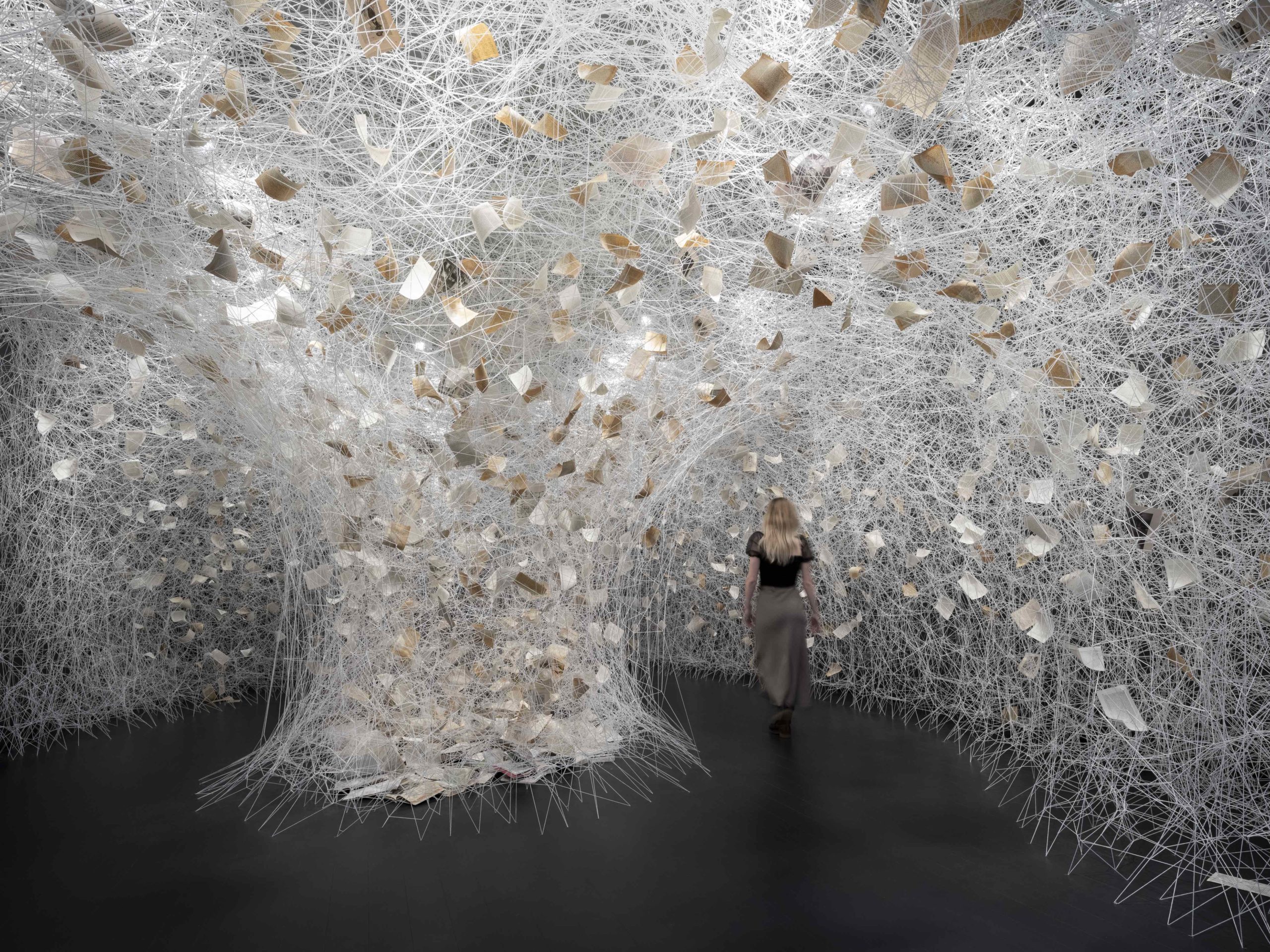 Installation view Chiharu Shiota: “Signs of Life” at Templon, NY, photo by Charles Roussel, courtesy of the artist and Templon.
Installation view Chiharu Shiota: “Signs of Life” at Templon, NY, photo by Charles Roussel, courtesy of the artist and Templon.
WW: What does this type of installation represent for or mean to you?
CS: Everyone is connected if you live in this society, and I wanted to make a line between memory, moment, and relationship. The connection is usually invisible, but I want to make it visible through my installation.
WW: “Signs of Life” also incorporates sculptures. Can you tell us about these?
CS: I pick old objects which belonged to someone. Because of this, the object has a lot of memory inside, so I wanted to connect, this part of life with red string. Also, the old family photos show life, we can forget about moments, but the photo helps us remember. When I see the photos, I can follow this person in life and family.
WW: You mentioned in the past that installation art spoke to you above drawing and painting, as you weren’t as comfortable with those mediums. Given the exhibition includes some drawings, how would you say your relationship with the medium has changed?
CS: I stopped drawing when I was 20 years old. I could draw but it always looked like someone else’s, it was not original. I began drawing in the air with string. But around 2005, I was diagnosed with cancer and then I started drawing on paper again and since then I draw every day. I feel that the drawings are not about technique anymore but like a diary for me.
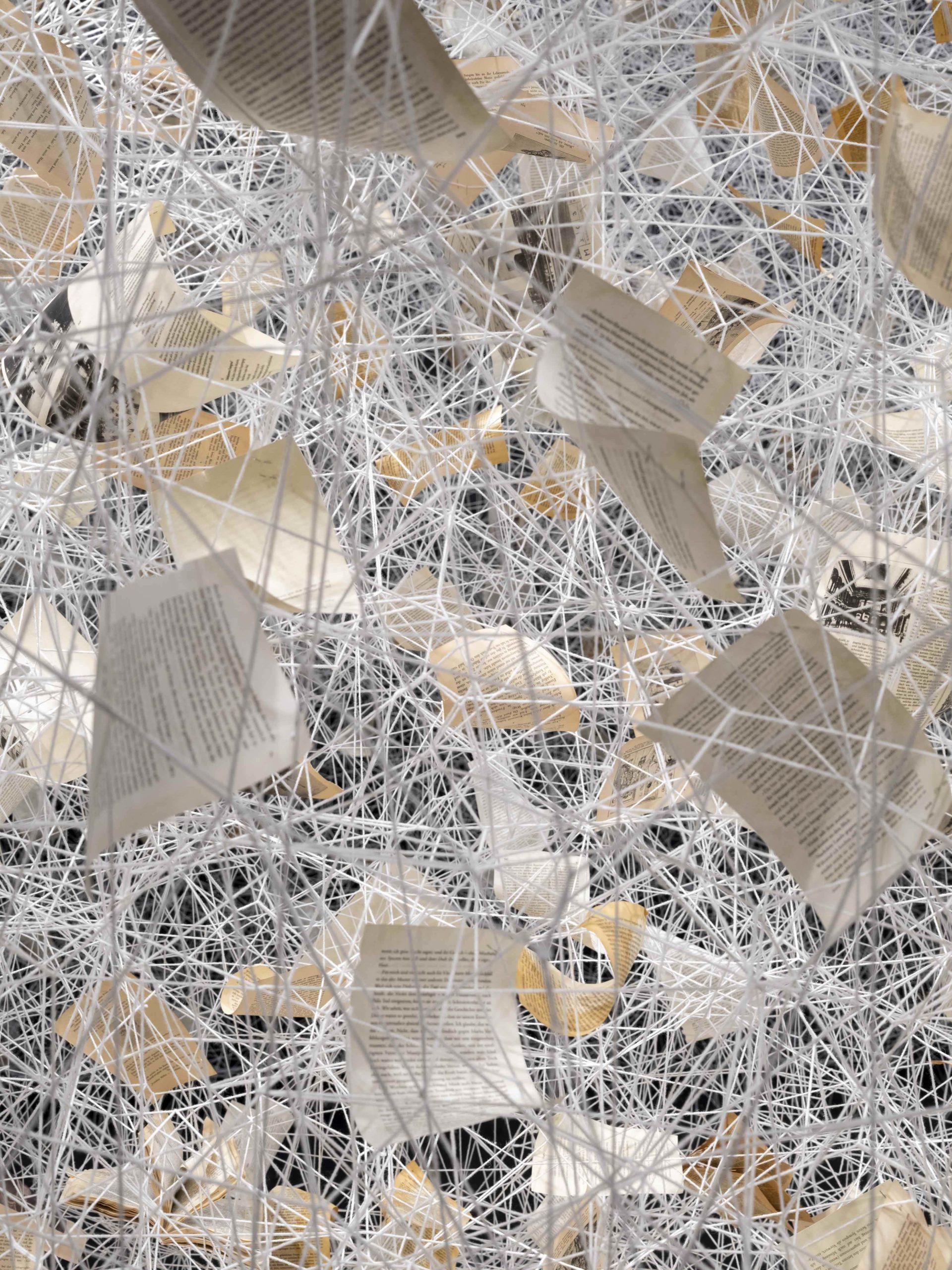 Installation view Chiharu Shiota: “Signs of Life” at Templon, NY, photo by Charles Roussel, courtesy of the artist and Templon.
Installation view Chiharu Shiota: “Signs of Life” at Templon, NY, photo by Charles Roussel, courtesy of the artist and Templon.
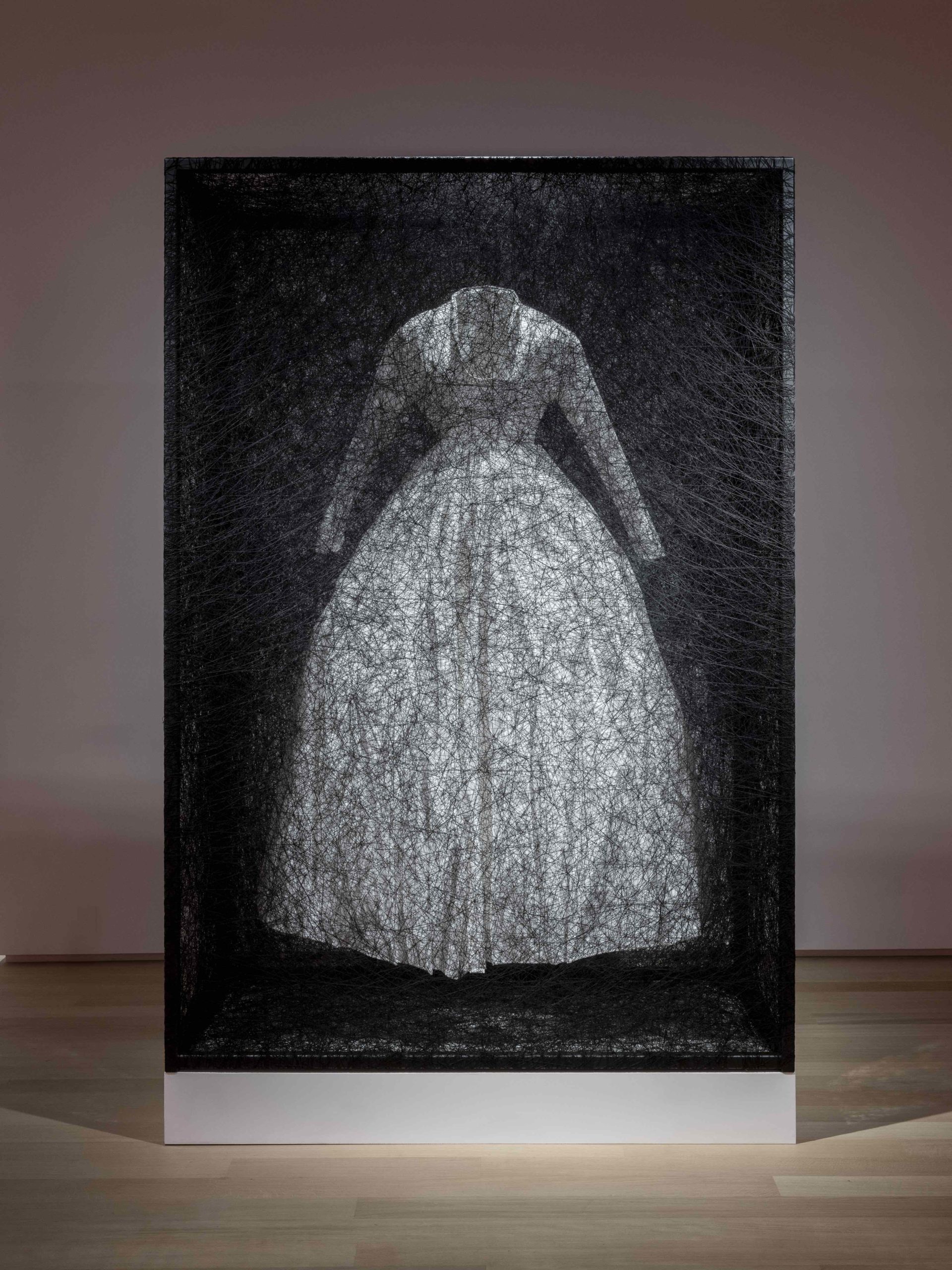 Installation view Chiharu Shiota: “Signs of Life” at Templon, NY, photo by Charles Roussel, courtesy of the artist and Templon.
Installation view Chiharu Shiota: “Signs of Life” at Templon, NY, photo by Charles Roussel, courtesy of the artist and Templon.
WW: Your educational background includes studies in performance. How did that inform the practice you’ve built around installations? Do you consider the process of installation itself to be a performance?
CS: When I came to Germany, I moved nine times in three years and I had the feeling I wanted to find my own space, so one day I started weaving around my bed. I created from this moment, the installation “During Sleep” and at the opening night I was sleeping in the bed. This was a performance in my installation.
But creating the installation itself is not a performance. It is more like making a drawing, it is like meditation. I feel like I am making a painting in the third dimension.
WW: A lot of your work considers ideas of existence extending beyond the physical body to include your consciousness—but you said, at one point, you considered your existence to end when your physical body died. What changed your mind? How did this correlate with your creative practice, did one inform or change the other?
CS: In 2019, I had my solo exhibition at the Mori Art Museum, showing more than 100 works [from] over 25 years of my artistic career. During preparation for the show, I was diagnosed with cancer again and then I really started to think about the soul. When my body dies where is my soul going, where is my consciousness, where do I live? The theme of my work is existence in the absence, but during chemotherapy, I feel like my body and consciousness [were] not together, and I wanted to make a part of my body and put it inside the installation. This Illness changed my art and feelings about death.
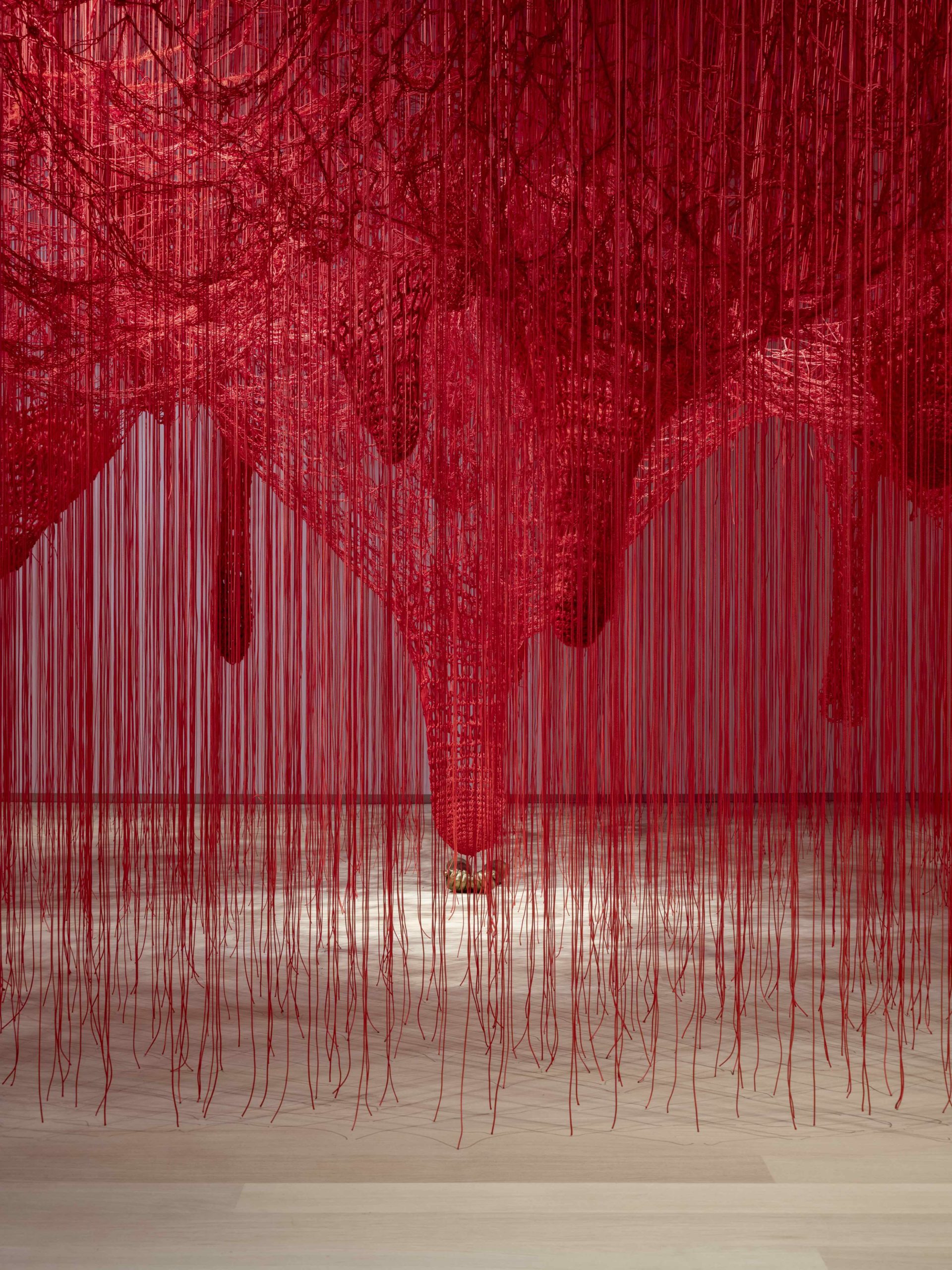 Installation view Chiharu Shiota: “Signs of Life” at Templon, NY, photo by Charles Roussel, courtesy of the artist and Templon.
Installation view Chiharu Shiota: “Signs of Life” at Templon, NY, photo by Charles Roussel, courtesy of the artist and Templon.
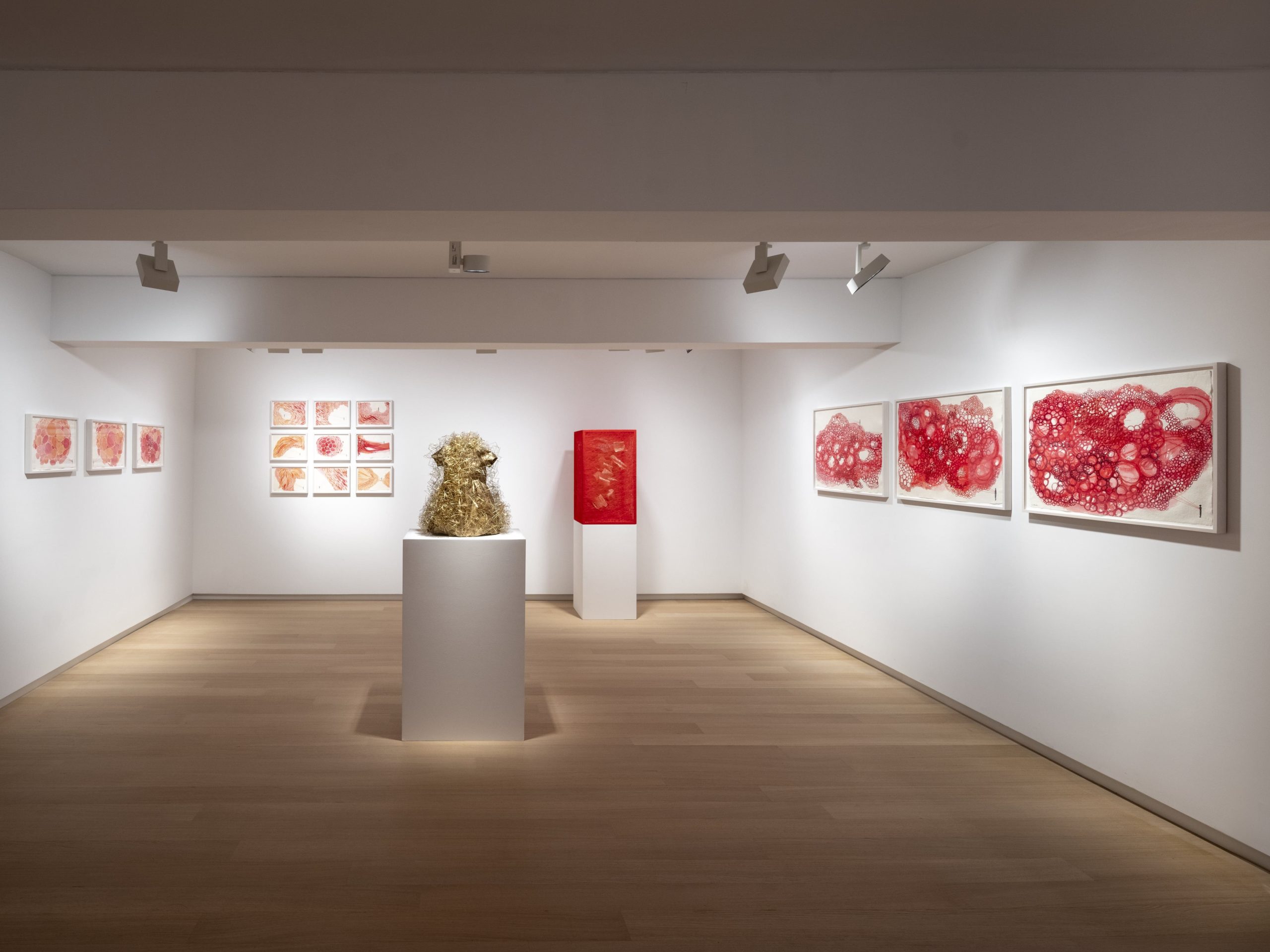 Installation view Chiharu Shiota: “Signs of Life” at Templon, NY, photo by Charles Roussel, courtesy of the artist and Templon.
Installation view Chiharu Shiota: “Signs of Life” at Templon, NY, photo by Charles Roussel, courtesy of the artist and Templon.







